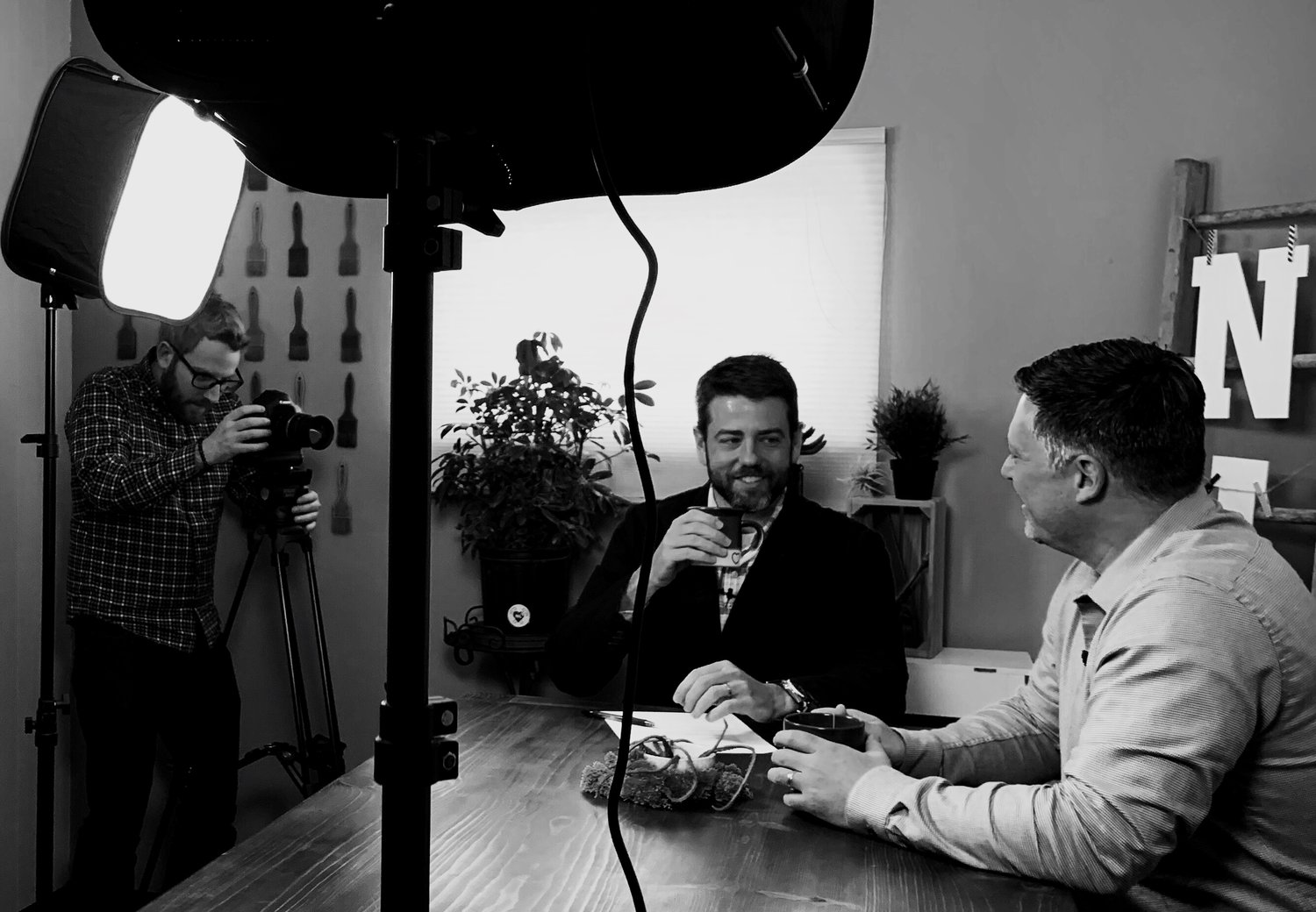Episodes

Thursday May 02, 2019
Episode 24: Pettit Rudisill Neighborhood
Thursday May 02, 2019
Thursday May 02, 2019
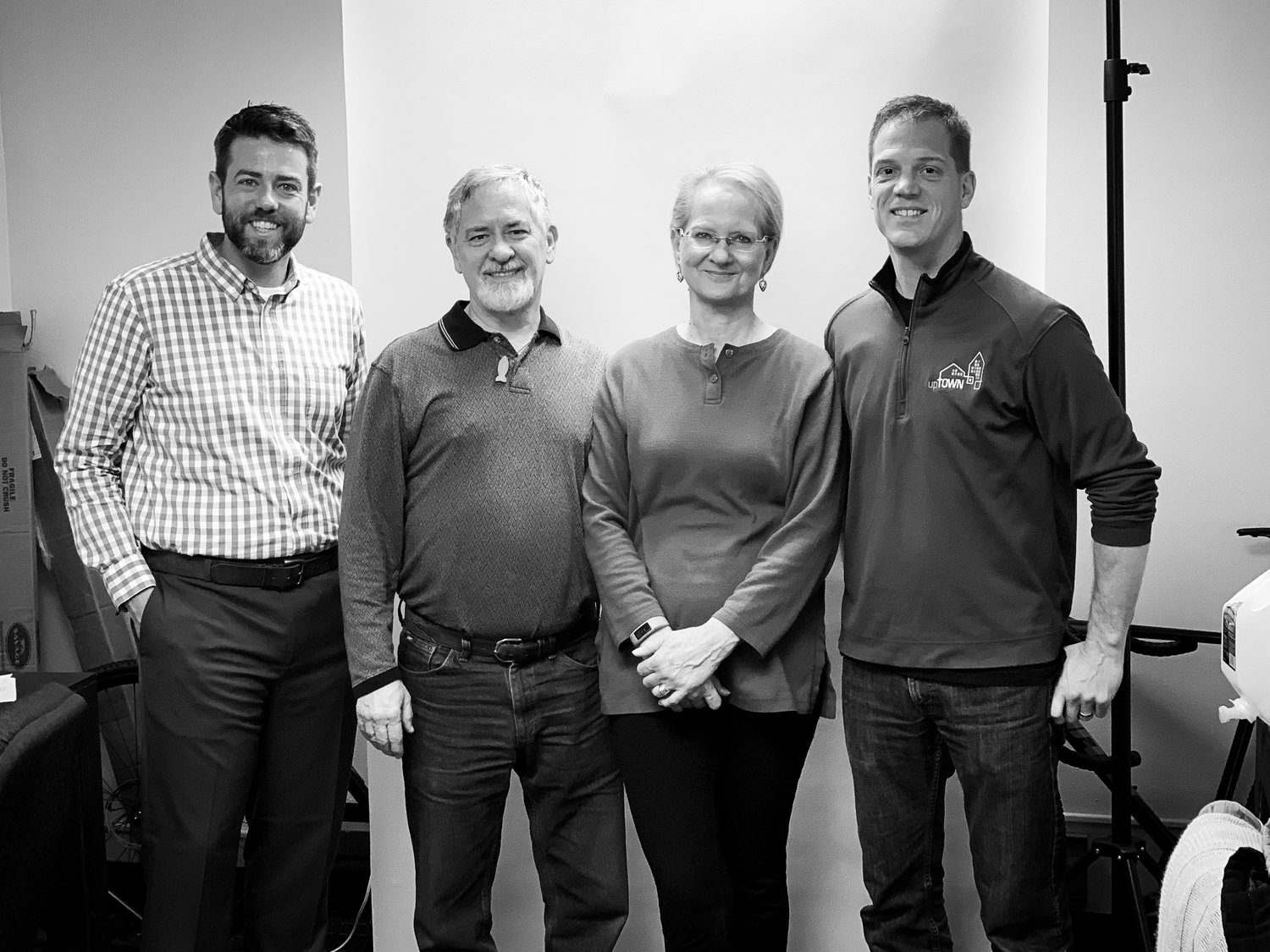
Part 5 of a 5-part series where we interview the five neighborhoods that NeighborLink has invited to part of a 2019 comprehensive research project. Our desire is to learn what makes a healthy neighborhood healthy. These five Fort Wayne neighborhoods have been chosen for their unique socio-economics, demographics, geographic influences and levels of neighbor engagement at the association level.
Mark, Laurie, and Randy joined NeighborLink for an insightful conversation about the Pettit Rudisill Neighborhood. Laurie was born and raised in the same home that her and her husband, Randy, have been living in since 1986, which gives tremendous insight into how the neighborhood has changed and stayed the same over the past handful of decades. Mark and his wife migrated to Fort Wayne over 20 years ago and as they got involved in a southside church. Over a couple of years, they continued to move south to their current home that they purchased 17 years ago.
Pettit Rudisill is the neighborhood I know the least about and the one I’m most excited to learn about because I think it’s a perfect example of a neighborhood that has definitely been impacted by socio-economic factors beginning in the last 60s, but maintains it’s strong neighbor-to-neighbor connectivity and health. I drive through it almost every day as I either drop off or pick up my kids from school and travel down it’s main corridor. We do a lot of NeighborLink projects in that neighborhood each year and meet some incredible, long-term neighbors there. Rudisill is one of the main east west corridors on the south side, and it is quite the boulevard with bigger homes, wide streets and mature trees covering the landscape.
Laurie shares with us that the neighborhood started to change demographically and racially in the late 60’s as more African Americans began to buy homes and realtors began to scare many white homeowners out of the neighborhood with fear that their property values would suffer. Laurie’s family stayed put, raised their families, and proved that the neighborhood was just fine with an increase in diversity. Pettit Rudisill may have always been the side of Rudisill Boulevard that was represented by the blue-collar working class that made up so much of International Harvester and GE’s workforce, but it was and still is a great neighborhood for families looking for affordable, solid housing.
Mark, Laurie, and Randy all share that yes, there are some challenges in the neighborhood, the media often portrays the SE side of town as a collective problem and that not all neighborhoods have problems. Mark shares about how vibrant and full of young life the neighborhood is and how his family has grown up benefiting from the neighborhood. “People are people,” Mark shares, which is so true. Everyone is trying to do their best with what they have and search for a quality of life that meets their desires. We all want to be known, loved, cared for, and part of something.
Pettit Rudisill is a solid neighborhood with great neighbors. I hope this project helps share the bright sides of PR and the SE side of Fort Wayne to begin changing the narrative that our community believes about the southside. PR talks about the increased investment of outside groups, new neighbors, and a major infrastructure project that the City of Fort Wayne is going to start this summer. With a huge increase in housing activity just to bit further to the west on the same street, I can imagine PR is going to be on the come up really soon.
We’re looking forward to our next phase of the 2019 research project, which includes a two-hour workshop with neighbors from each of the five neighborhoods: North Highlands, Williams Woodland, West Central, Hoagland Masterson and Petite Rudisill.

Thursday Apr 25, 2019
Mark Schmidt - Intentional Retirement
Thursday Apr 25, 2019
Thursday Apr 25, 2019
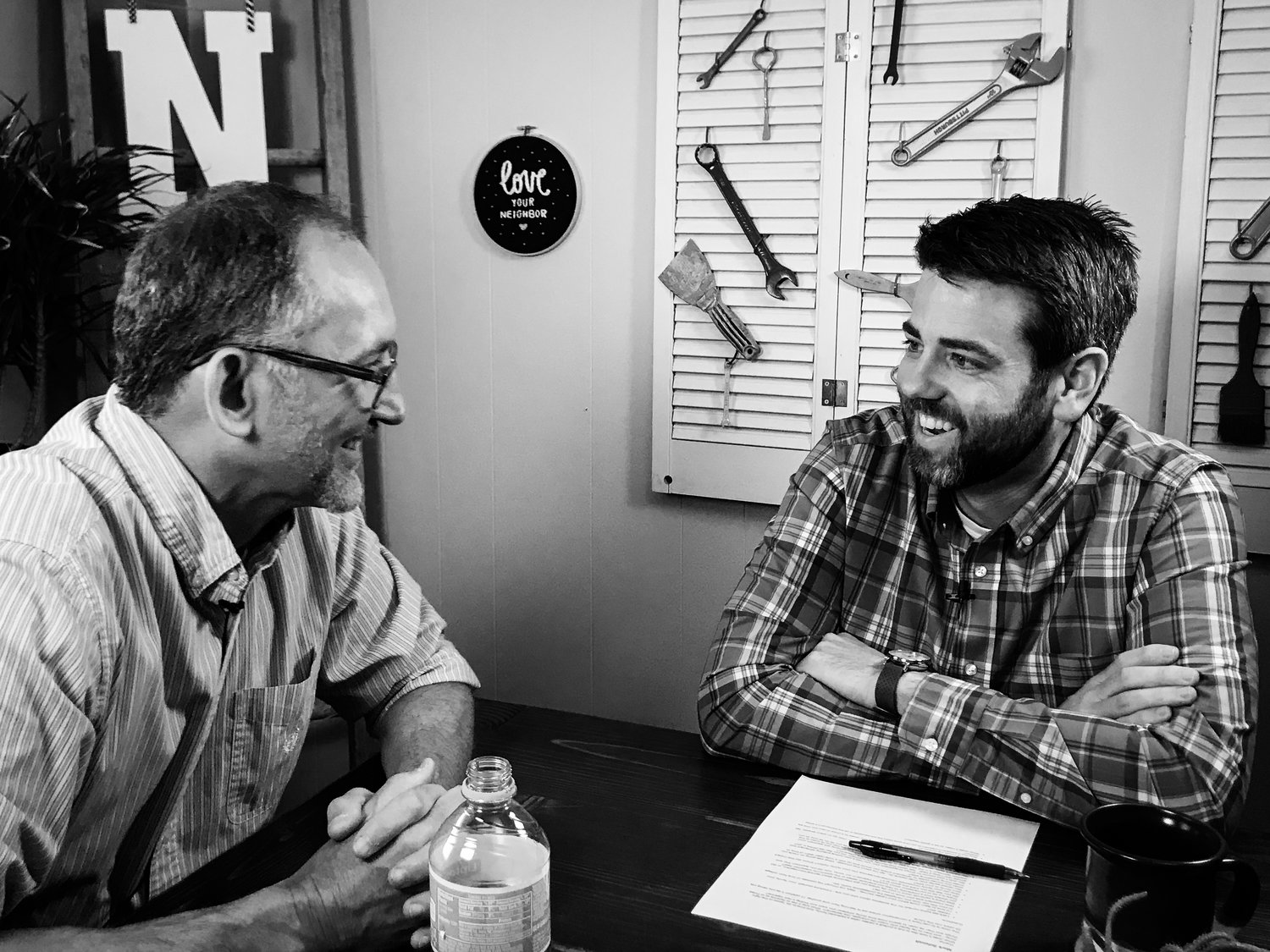
I’ve been pitched retirement since I was in college. It usually starts with me being asked to think about what I want to be able to do with my free time when I get there, how much money would I like to have in the bank, and and the type of lifestyle I want to have. The sales pitch usually includes being able to play golf, travel the world, and be able to afford the house that I always wanted. Not all financial planners are pitching that story, but we can agree that sort of narrative dominates. While I do believe being prepared for that phase of life is responsible, the way it has always been pitched just never settled with me. It simply seems to lack any sort of purpose other than leisure and I find leisure pretty boring. But, I’m only in my late 30s and a lot can change and I certainly have a lot to learn before I ever get to that point.
What’s is encouraging me regarding that discussion is how NeighborLink has benefited greatly from men and women who enter retirement with intention and purpose with a desire to use their time, abilities, and resources to help other neighbors through their life’s circumstances in tangible ways. For nearly 10 years, NeighborLink has had small communities of retirees, folks between jobs, or those under-employed with free time who intentionally organize by getting together weekly to take on projects that find our website. Each year, 300+ tangible home repair projects get completed because of a collective group of around 40-50 people throughout the year through three different groups currently. What they’re able to do, and what they choose to do, is absolutely incredible. So, I ask a lot of questions about their lives, their careers, how they get connected to NL, and what their motivations are when they could be doing anything other than helping.
I sat down with Mark Schmidt on this episode of Neighboring to discuss his personal journey. We take time to talk about how he navigated his 30 year career at one company, how he did or didn’t manage work/life balance, his family, the role faith plays in his life, and how he’s chosen to retire early from a professional career after his company moved away from Fort Wayne to take up a career as a volunteer. Mark is an extremely humble guy and doesn’t love answering these personal kind of questions because he wants to make sure that credit is given to God and those he serves with. I think anyone that has spent time with Mark knows that he’s as genuine of a guy that there is. He has always cared deeply about people and lived a live of service whether it was serving his co-workers during his career, his fellow volunteers with Carpenter’s Sons, or now neighbors with tangible needs. We hope to tell some stories of our other retirees soon as well.
I was encouraged to hear that things haven’t always come easy with Mark when it comes to trying to manage work/life balance or the fact that he’d say that volunteerism wasn’t as core of a priority during most of his working years outside of coaching his kids’ soccer teams. Proved to me that he’s just a normal guy trying to do the best he can with what he has and is in need of grace just like the rest of us. I’ve not met a person who has the work/life balance or integration thing figured out completely, and I’m not sure it’s even possible. I’m personally finding it hard to find time to volunteer at my phase of life, and I even run a volunteer organization. Things ebb and flow, and Mark’s story reminds me that there are all kinds of avenues to be a “good neighbor’ and serve others. That service to others is as much about how we perceive our responsibilities to others around us wherever we are as it is about “doing things.” Being a good neighbor is about being, not just doing.
I hope people find this podcast encouraging because there are a lot of people in our community that are nearing retirement age without a plan in place of how they’re going to spend their time who also lack the community to navigate a radical change in “time” well. There is no right way to spend retirement, but there are ways to spend it if caring for others, using your hands to help, or if you want to keep working but in a different context. NeighborLink is benefiting from Mark and dozens of other men and women’s lifelong investment into honing their profession as they bring it to work with them on projects. They’re organizers, leaders, builders, creators, communicators, teachers, and compassionate people that want to love others with their gifting.
I’d love to connect you to Mark or other leaders at Nl who would welcome you to join them. Simply send me a message at Admin@Nlfw.org.

Wednesday Apr 17, 2019
Hoagland Masterson Neighborhood - Part 4 of Healthy Neighborhoods Series
Wednesday Apr 17, 2019
Wednesday Apr 17, 2019
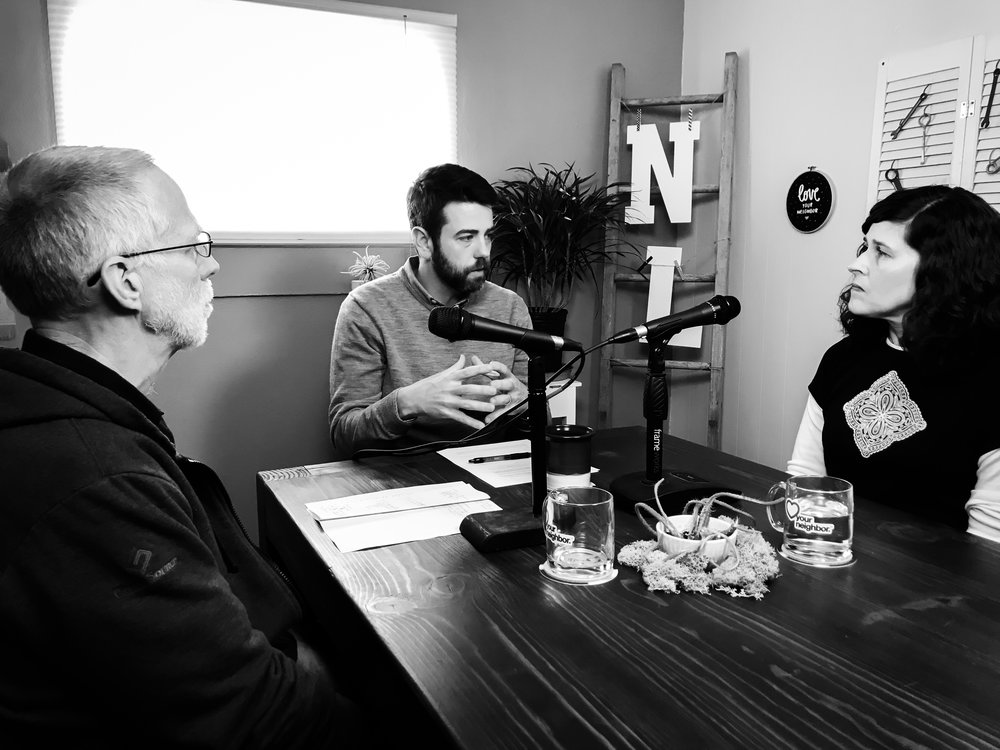
Part 4 of a 5-part series where we interview the five neighborhoods that NeighborLink has invited to part of a 2019 comprehensive research project. Our desire is to learn what makes a healthy neighborhood healthy. These five Fort Wayne neighborhoods have been chosen for their unique socio-economics, demographics, geographic influences and levels of neighbor engagement at the association level.
Arline and Jim join NeighborLink for an insightful conversation about the Hoagland Masterson Neighborhood. We started by asking them how they ended up in Hoagland Masterson (HM) and into leadership roles. Then they describe the neighborhood dynamics, the burdens and battles they’ve been facing for years, and what they think makes HM healthy at this moment. Hoagland Masterson has always been a working class neighborhood with higher levels of poverty, but has a long history of committed homeowners that go several generations deep. Arline describes her neighbors as “resilient,” because of the challenges they face and seem to weather. (Link to Neighborhood Map)
I’m pulled to Hoagland Masterson like no other neighborhood other than the one I live in, which is just a block away to the south of HM’s border. I believe that HM is the next up and coming neighborhood in Fort Wayne that no one can quite remember where it’s located, except people like Arline, Jim, and the dozens of long-time residents waiting for the attention they deserve from the City of Fort Wayne, developers, and potential neighbors. It is uniquely positioned between an established, stable, and growing neighborhood, the most ethnically diverse commercial corridor, the potential of Electric Works, and downtown’s current crown jewel, Parkview Field, home of the Tincaps. I’ve been trying to buy a building for NeighborLink here for four years and I tell everyone that will listen that HM is where to invest because it’s the neighborhood that is full of long-time residents that deserve to see things progress.
There is a community of committed neighbors like Jim and Arline that work tirelessly, know more about their neighborhood than any other neighborhood leaders I’ve met, and are the resilient fighters that Arline talks about in the podcast. These are neighbors I want to live by, resource, connect others to, and see what happens for the entire south central Fort Wayne region. The struggle is real for them though as they are marginalized, struggle to get the attention they need to get projects done, and there just isn’t quite enough people energy that other neighborhoods have. This neighborhood is part of why I felt compelled we do this study. They have so much of the same assets that we do in Williams Woodland, just not the same amount of them, and I think that matters. It’s not knowledge, vision, intent that’s holding them back, because they are doing great work. It’s mostly capacity. If they had more capacity, what could happen?
I appreciate Arline and Jim’s candor about what’s been a struggle and seems to fight against justice seeking neighbors. I also appreciate how they acknowledge some recent wins in getting the attention of the City for some infrastructure projects as well as putting pressure on the local electric utility that just built a major substation in their neighborhood without much consideration for the neighborhood. Arline and Jim see promise, see speculation happening as home values increase in their own area, and continue to invest their own resources into stabilizing the neighborhood one house at a time with their own resources.
I think you’ll really enjoy this podcast because it begins to shed some light on the other side of the “healthy” neighborhood reality. It at least for us helps us begin to see how much things are the same among neighborhoods at the core, yet different on the surface. If you’re looking to start investing in neighborhood development, come join NL on a project in HM this summer.
We’re looking forward to our next phase of the 2019 research project, which includes a two-hour workshop with neighbors from each of the five neighborhoods.

Thursday Apr 11, 2019
West Central Neighborhood - Part 3 of Healthy Neighborhoods Series
Thursday Apr 11, 2019
Thursday Apr 11, 2019
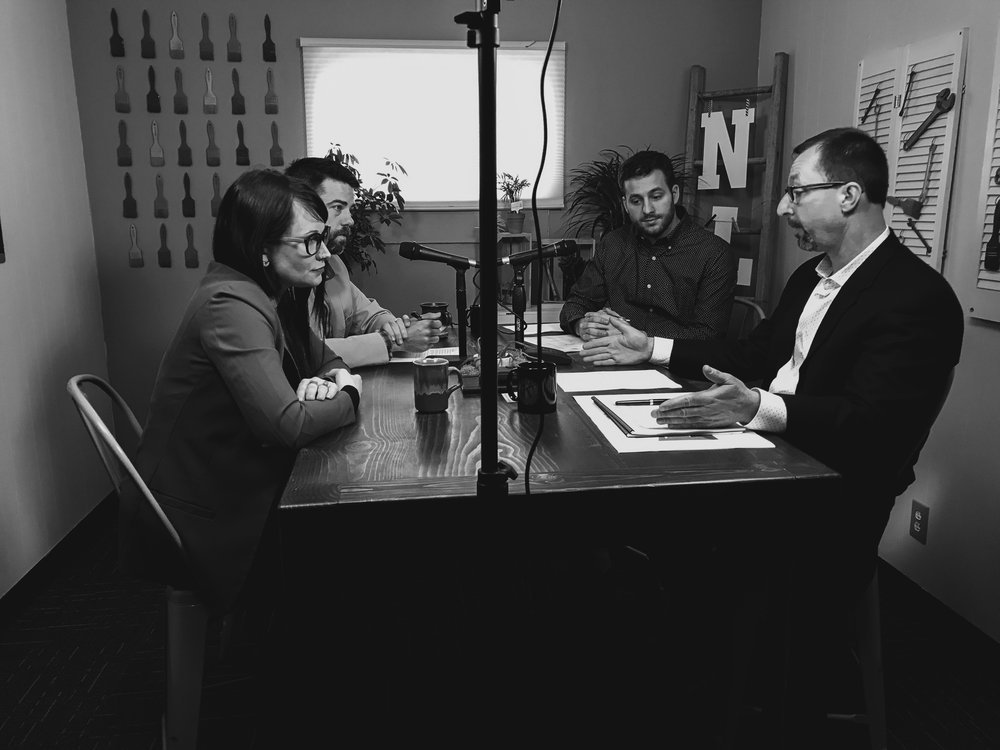
Ben and Tyler join NeighborLink for an insightful conversation about the West Central Neighborhood. We started by asking them how they ended up in West Central and into leadership roles. Then they describe the neighborhood dynamics, the projects they’ve been able to successfully accomplish, and what they think adds to the health of West Central. West Central is celebrated for its diverse population, has benefited from its downtown collar neighborhood status where grand homes were built in one of the first Fort Wayne neighborhoods, and a significant boost in economic development that has been building past 5-10 years. (Link to Map)
West Central has been the place to be if you want to live downtown in a neighborhood setting since it was formed in the late 1800s. It’s the quintessential and grand downtown collar neighborhood that was built by industrial and professional icons of Fort Wayne, which have a history of weathering the seasons of economic swings better than other neighborhoods in a city. Like any neighborhood of that era, some streets and sections of the neighborhood were more grand than the others as the wealthy built their mansions near their empires while those that built the empire lived in close proximity to the places they dedicated their lives to build. West Central is full of grand homes, traditional sized homes of the early 1900s, worker’s cottages, and several historic apartment complexes. While many of the homes may have survived to some extent, many of them were divided into multi-plex homes that made rent cheap and accessible to a wide variety of individuals, particularly artists and young professionals.
West Central has long been touted for its many forms diversity from economics to professions to generational to many other areas. While this is still true to their story, things are starting to change in West Central as the national trend to return to the central core over the past decade is in full swing in West Central. It’s been happening for years in West Central as there have been many concerned residents who have been on personal conversation and development initiative to buy vacant or dilapidated properties with goals of preservation and economic development. Rather than allow a property to play roulette of staying the way it is with the next buyer, they’ll buy it, renovate it a higher standard and sell it in an effort to attract a more affluent or stable homeowner. Those efforts have been combined with some City of Fort Wayne initiatives to leverage federal dollars to renovate key properties on throughways to spur additional development. Ben shares about this development as well as some other situations where longtime owners of multiplex homes are converting them back to single family homes with the desire to sell them rather than continuing to be landlords because the time is now to do those kind of things.
Ben and Tyler talk about a major development in their area, Electric Works, which is a comprehensive redevelopment initiative of a former General Electric manufacturing facility that was responsible for the development of the area in the early 1900s. Ground hasn’t even been broken and just the potential is driving development in their area, which is great for their neighborhood but also brings issues to the surface as well as new issues as they think about the impact of such an effort. They’re huge supporters, but asking really great questions about the human and economic impact of the place they love.
We also talk about in the podcast the role geography plays in neighborhood development and perception. West Central has two many roads in and out of downtown that divides the neighborhood, it technically includes all of downtown, and has a major train track that acts like a wall dividing a section of the neighborhood. Each section has its own character, challenges, and opportunities along with feelings of included or excluded. I’ve been thinking a lot about how things “feel” in a neighborhood within just a block or two of each other and how that plays a part in neighborhood health and connectivity.
West Central is in a really exciting time with some extremely smart leaders at the helm. Their home and garden tour generates significant revenue and exposes them to a lot of potential neighbors. They have intelligent and experienced neighbors leveraging their skills to lead larger scale developments that benefit all neighbors, like preserving old brick alleys. And, they are aware that not all development may be good development. We’re excited to learn from them because we think they have a lot to teach other neighborhoods that are trying to grow and develop.
We’re looking forward to our next phase of the 2019 research project, which includes a two-hour workshop with neighbors from each of the five neighborhoods.

Thursday Apr 04, 2019
Williams Woodland Park Neighborhood - Part 2 of Healthy Neighborhoods Series
Thursday Apr 04, 2019
Thursday Apr 04, 2019
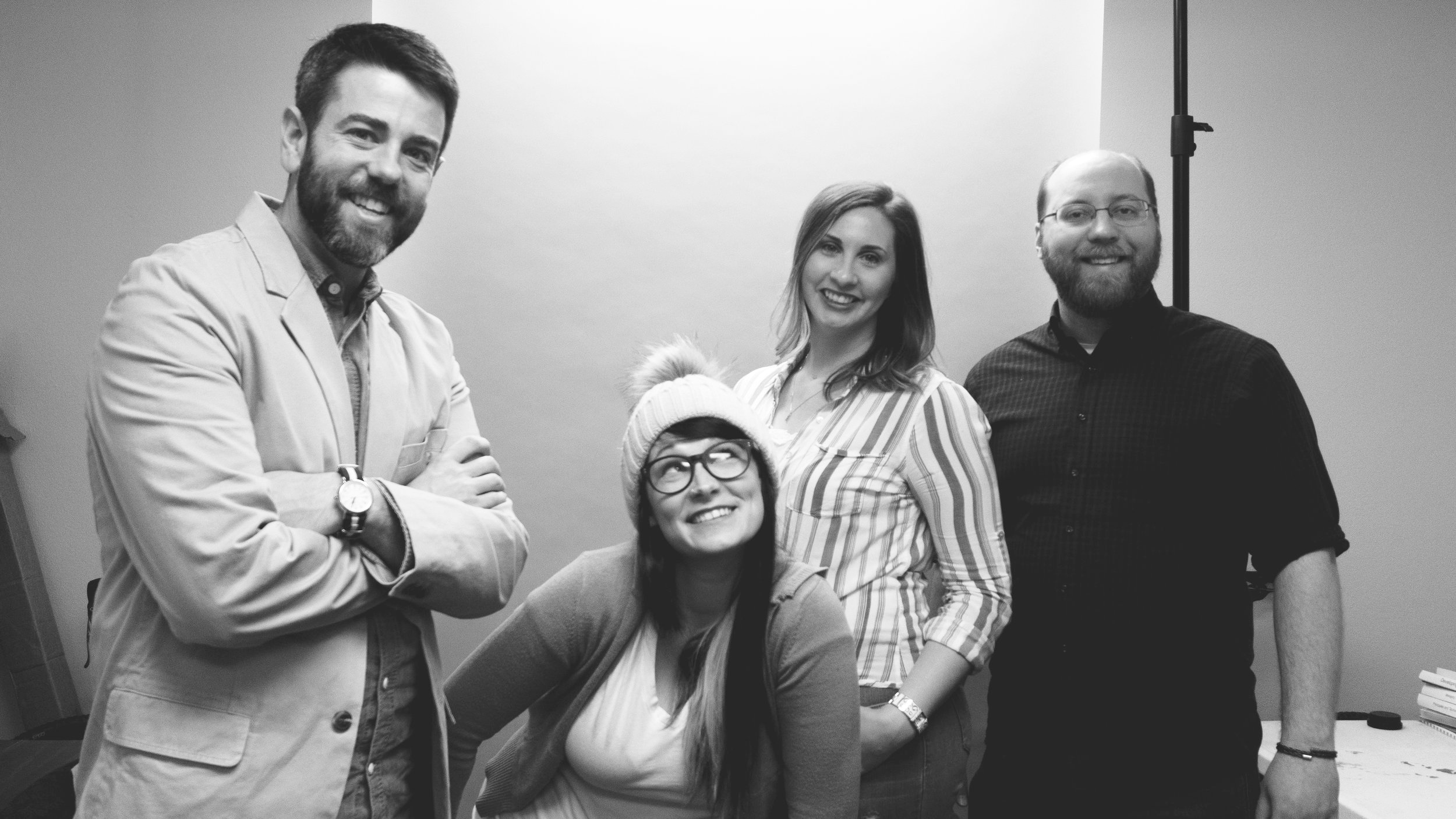
Part 2 of a 5 part series where we interview each of the 5 neighborhoods we’ve invited into a comprehensive research projects NeighborLink is facilitating in 2019. Our desire is to learn what makes a healthy neighborhood, healthy. Each of the 5 Fort Wayne neighborhoods have unique socio-economics, demographics, geographic influences, and levels of neighbor engagement at the association level.
Lyndsay and Charlie, two residents of the Williams Woodland Neighborhood, join us for a conversation about their neighborhood. They spend time describing their neighborhood, some of the projects they’ve been able to accomplish successfully, and a lot of reasons what they think adds to the health of WWPN. One thing is for sure, WWPN has strong social connection among neighbors, which impacts their ability to accomplish as much as they do.
I’m particularly biased about WWPN because my family lives there and we love being in this neighborhood. We decided to move into WWPN about 11 years ago after determining that proximity matters, and if we’re going to be intentional with integrating our desires for being active in the community we serve in more fully, then we should really consider where we live. We didn’t do this alone or even necessarily choose WWPN on our own, we did this with another family. We knew that at least we’d have some friends in this new neighborhood. What we quickly found out as we were looking for the right house to buy in the first year, that there was a thriving neighborhood full of people that wanted to more people to join them. We met so many neighbors while we looked for a house and felt relationally connected without even living there. We HAD to buy a house there and we couldn’t imagine living anywhere else.
As you’ll hear in the podcast, that’s true for Lyndsay and Raul as well as Charlie and Nancy. You can’t be out on the sidewalk during good weather days looking at homes to buy in the afternoon or evening without being approached by a number of neighbors eager to introduce themselves, tell you about the neighborhood, and encourage you to buy that place you’re looking at. That’s truly special and not all neighborhoods have that. As Charlie and Lyndsay discuss, this spirit in WWPN goes back 30-40 years as the generation before us made intentional decisions to live there and begin this culture of social connectivity, neighborhood pride, and creating strong initiatives to create the space they wanted to live in. Many of those neighbors that moved in a generation ago are still there and as active as ever right alongside all the young families that have moved in. For several family units, the kids of the generation before are now raising their own families in WWPN.
An additional thing that WWPN has that a lot of other neighborhoods don’t is an annual holiday home tour event that draws people from all over Fort Wayne to tour its historic homes. This event generates a sizable revenue in which the association uses to fund events, incentivize homeowners to make beautification improvements, and common area improvements such as historic street signs and the flower baskets that hang from them during spring and summer. A historic neighborhood generating revenue through an event is not a new concept and not exclusive to the neighborhoods that we research, but it very uncommon in general and does have an impact on various aspect of neighborhood health. Any time there are resources to be spend on behalf of the neighborhoods, neighbors are going to show up to share their opinions on what they should be spent on.
Williams Woodland is a small historically designated neighborhood located just about a mile south of downtown Fort Wayne. WWPN was an early suburb that developed in the late 1800s to the 1910s with some infill that happened over the decades following. The homes range from smaller bungalow style to traditional four square homes to grand victorian homes surpassing 5,000 sq ft. There were measures taken 20-30 years ago to change zoning to reduce the number of rental properties although many still exist. There is a wide range of ages of neighbors and is becoming a go-to neighborhood for younger families looking to raise their families in the central core. With the hotter real estate market in our area, move-in ready homes are usually sold before they even hit the market and the ones on the fringes are being picked up by neighbors with the income to invest in preserving the home to make sure its ready to last another 100 years.
My wife and I really love our neighborhood and couldn’t imagine living anywhere else. It has been interesting to watch the neighborhood develop over the past decade and see our property values go up significantly in the past two years. We aren’t sure we could afford to buy here if we hadn’t moved in when we did, which creates a lot of conversations on the impact of generification and how we as neighbors are or aren’t contributing to that. It will be interesting to see what happens in the next 5-10 years and see if WWPN expands beyond its current smaller bounders in an effort to support neighborhood growth to the north or south of us as the demand for downtown housing continues to increase.

Thursday Mar 28, 2019
North Highlands Neighborhood - Part 1 of Healthy Neighborhoods Series
Thursday Mar 28, 2019
Thursday Mar 28, 2019
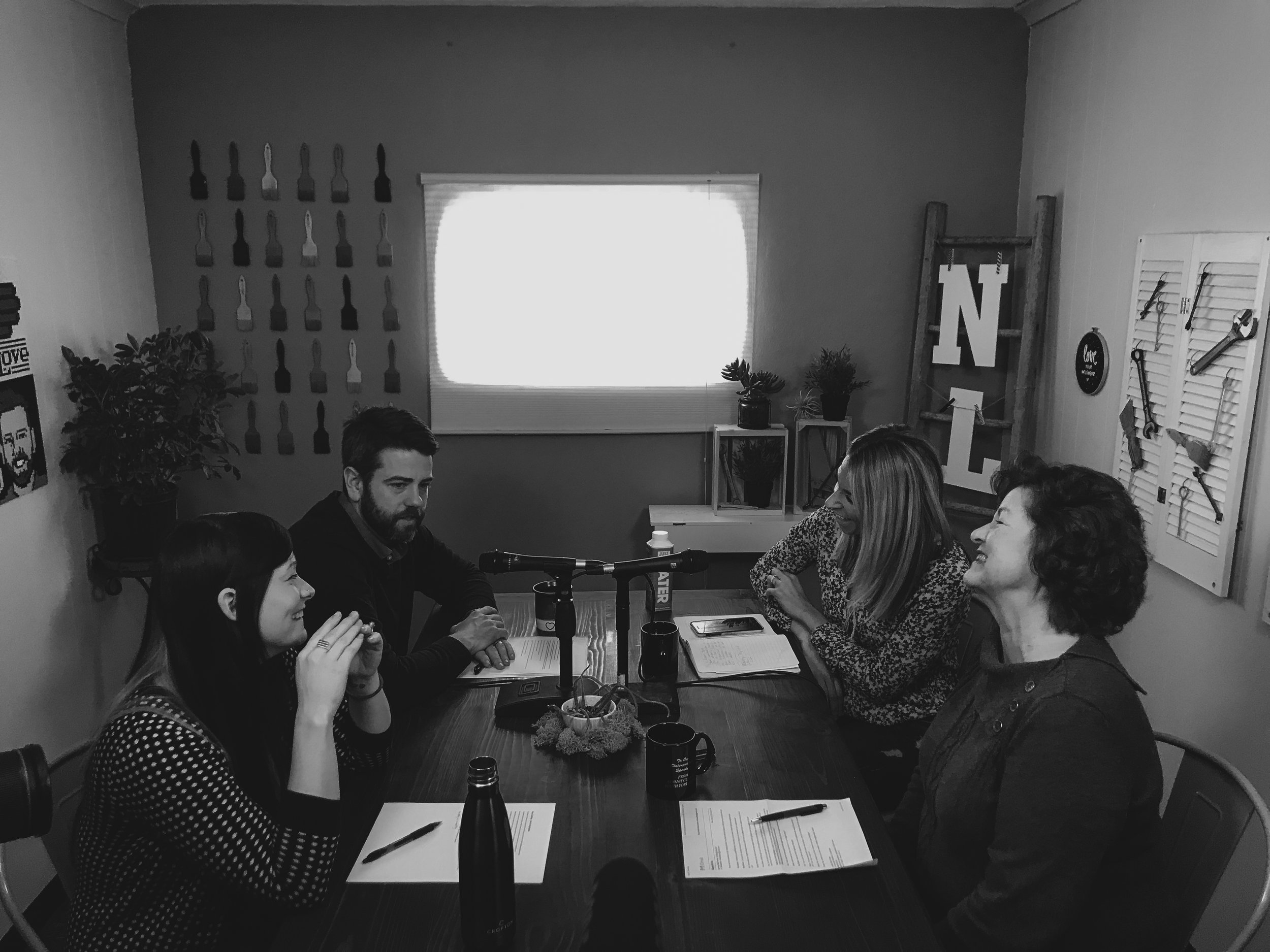
Part 1 of a 5 part series where we interview each of the 5 neighborhoods we’ve invited into a comprehensive research projects NeighborLink is facilitating in 2019. Our desire is to learn what makes a healthy neighborhood, healthy. Each of the 5 Fort Wayne neighborhoods have unique socio-economics, demographics, geographic influences, and levels of neighbor engagement at the association level.
Kay and Bailey, two residents of the North Highlands Neighborhood, join us for a conversation about their neighborhood. They spend time describing their neighborhood, some of the projects they’ve been able to accomplish successfully, a new event that went extremely well in 2018 at a brand new park they helped make happen, and some of the challenges of getting neighbors connecting, informed, and active.
Kay is a long-time resident of over 30 years and has been the active president for a long-time. Kay and others have advocated for and helped make some of the most comprehensive infrastructure projects happen in their neighborhood that we’ve not seen in other neighborhoods. Between street and sidewalk improvements, safety measures with the police, and the conversion of an old school into a public park. They have a lot to teach other neighborhoods about how to work with local government in order to improve your neighborhood.
Bailey and her young family moved into North Highlands less than a decade ago and have been getting more actively involved in the past few years in a more organic and neighbor-to-neighbor way. Bailey works hard to facilitate the social connectivity of the neighbors through more engaging conversations on modern communication platforms, asking for help with even the smallest of needs such as whether anyone had any tomatoes left from fall harvest rather than running to the store, and making sure neighbors know who to reach out to if there are issues. Bailey is growing in her leadership and desires to help create the neighborhood that her family and neighbors want to have.
North Highlands is a relatively smaller neighborhood located just about a mile north of downtown Fort Wayne. The homes are of average size between 1200-2200 square feet and remind you of a very early suburb in terms of street layout and common age of housing stock. They have the highest median income of any of the 5 neighborhoods we’ve researched and have the least amount of racial diversity. Residents tend to be a bit older as it’s a great starter neighborhood for younger families and a great place to downsize and retire. The smaller housing sizes make it hard for growing families to stay in their homes without feeling the size of their home closing in. North Highlands is a very popular downtown collar neighborhood and has homes turn over relatively quickly when on the market. NeighborLink volunteers helped over 100 homeowners in the zip code of North Highlands in 2018 and spend quite a bit of time in this area.
We’re looking forward to our next phase of the project, which includes a two-hour workshop with neighbors.

Thursday Mar 21, 2019
Invest In Yourself - Sam Plamann
Thursday Mar 21, 2019
Thursday Mar 21, 2019
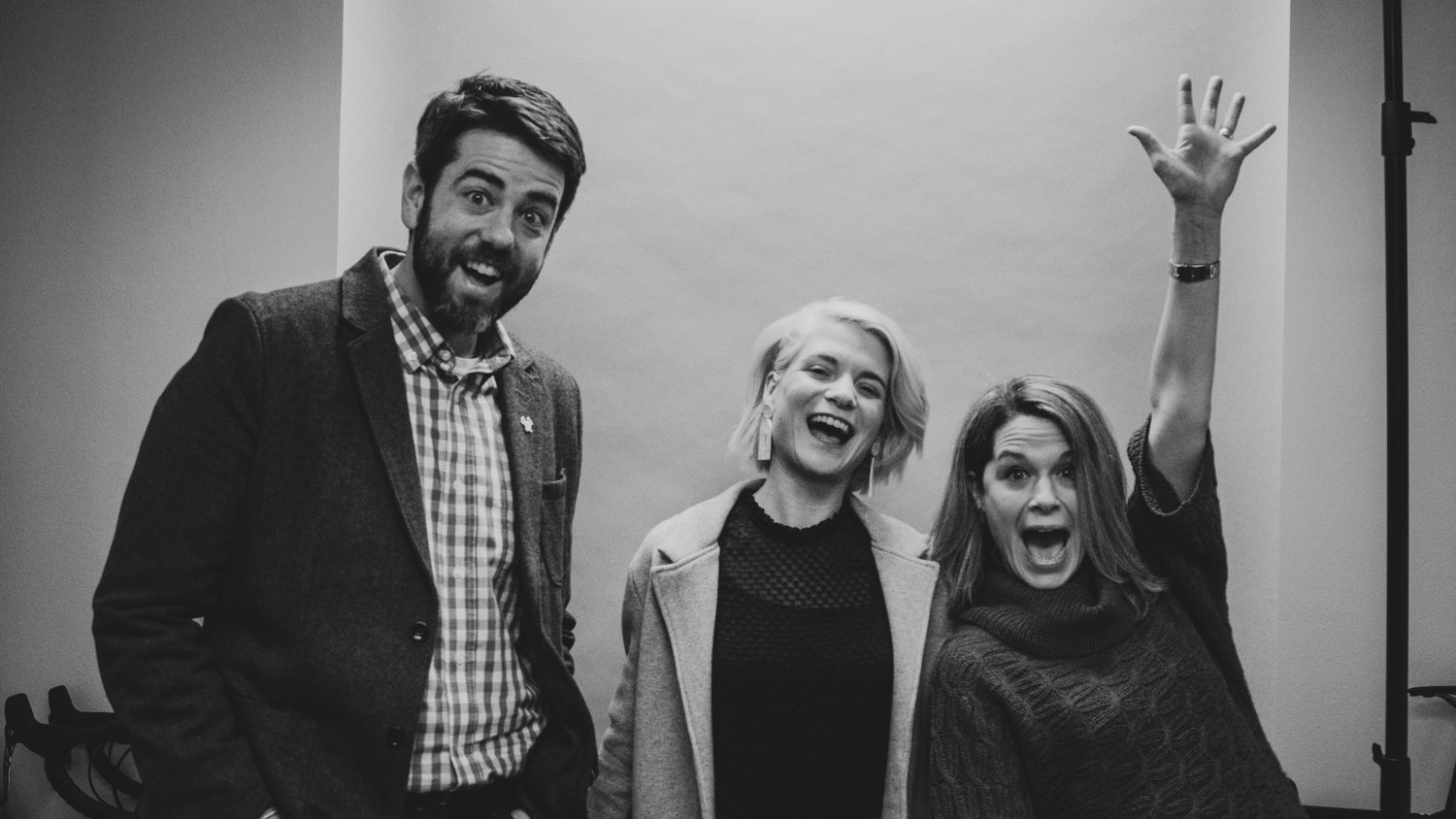
I’ve been actively wrestling with the tension between the intersections of life, vocation, and purpose for the past 15 years. The traditional ideas of where you draw strong lines between work, life, and your personal pursuits in order to find “balance” have never really made a lot of sense to me, especially in the past decade. It became expected that work push into personal life when we all started getting laptops and cell phones. Life presses into work when you’ve got kids, an old house, or a family member’s funeral. And, no one should stay working a job that doesn’t contribute to your mental and spiritual well being. We can’t all have “idilic” jobs, but we certainly can begin to find environments where work, life, and personal pursuits can be better integrated.
When I met Sam 18 months or so ago, I saw another young professional working in a mission-based organization that was organically connecting all those dots. She was working a job she loved and brought professional fulfillment. She was integrating her husband, Lee, and her social network into her job through events and functions. And, because she has a more outgoing and inclusive spirit, was inviting others on the fringe of her social network into her social life. I noticed this last summer when Sam, Lee, and their circle of friends would make plans to go to a local park on a Saturday evening to play soccer, hangout, picnic together, and put it out via their social media that anyone is welcome to join them. Sam talks about that being just an organic part of their lives rather than a deeply intentional act, but that it is the spirit that has come from regular intentional acts over time.
When Sam and I discussed this before sitting down for this podcast, the conversation quickly led to the role of personal development. That in order to become the people that we want to be or create the environments that we want to be a part of, that it is vital to choose learnings, experiences, and accountability to become better versions of ourselves. If we want to be better employees, friends, athletes, neighbors, or grow in our versions of spirituality, then we have to choose it. Some times those are hard things or we have to make it harder to truly grow from them, but they’re always worth the effort. Sam is a really fast runner and even as an adult uses goal setting in her running to grow her character that has impact in other areas of life. Personal development is so important.
I’m really encouraged by Sam, her husband Lee, and several others that I know are part of Sam’s social networks that are choosing lifestyles and jobs that require them to integrate life, purpose, and vocation rather than attempting to keep them separate. I’ve been learning that true fulfillment and happiness are coming from this integration both personally and within my family and it seems to be the best way to live.
Sam would attest that boundaries are still required and while integration leads to health in some ways, it can also push in where we need to say no. The “right way” is a personal decision that comes from being more mindful and present where you’re at, wherever that may be, and from a position of investing in your personal development. You can never go wrong from working on yourself. It’s the only thing you can control in life.

Thursday Mar 14, 2019
Finding a Friend - Mrs Kolde and Mary
Thursday Mar 14, 2019
Thursday Mar 14, 2019
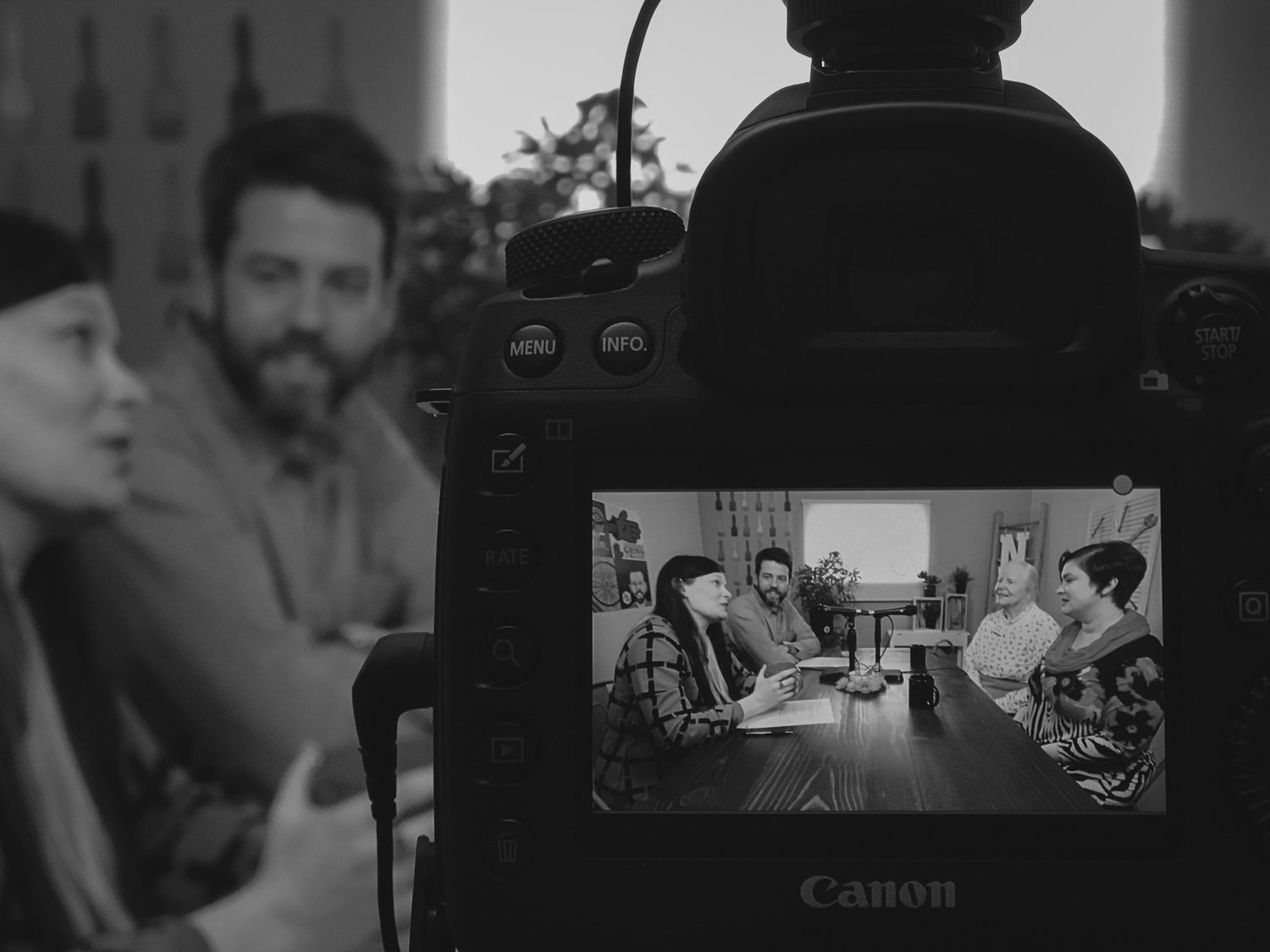
This! This Story! This is one of my greatest hopes for those that volunteer at NeighborLink and for those asking for help. Authentic connections between individuals that move from a transactional experience towards a relational one. That’s it. Where it goes or how long it lasts is not as big of a deal as the fact that it has the opportunity to happen. We simply want neighbors to connect and get to know one another to form a mutually beneficial connection.
Mary chose to get involved at NeighborLink, looked through the projects with help of her friend and NL staff member, Lyndsy, chose a project, and happened to connect to Mrs Kolde, who needed some housekeeping help. Mary says in the podcast that the first time helping Mrs Kolde lasted for several hours as she cleaned and Mrs Kolde shared parts of her story. That conversation has led to dozens of mutually engaging connections since. Mrs Kolde is as interested in getting to know Mary as Mary is Mrs Kolde. They share a love for beautiful environments, telling descriptive stories, experiencing the world around them, and helping others. Mrs Kolde has a long history of being active in her neighborhood, various organizations, and she still shovels snow as far as she can in either direction of her home as she physically can at over 80 years old. Mary certainly helps Mrs Kolde with some tangible needs like housekeeping, but I’m sure Mary would share how Mrs Kolde helps her with her things as well.
I can’t urge you to listen to this podcast enough. We have dozens of other stories of how volunteerism has led to relationships like this one. Not all relationships last, nor should they, but they should be attempted. Any connection works like any other relational connection. Life happens for both parties involved, the relationship gets disrupted, or becomes out of balance. However, what’s important from this story to me is how open Mary was to intentionally connecting with the person she set out to help. Mary was certainly going to get to know the person she was going to help while she served. It just happened in this case that Mrs Kolde met her with similar enthusiasm. In the brief hour we spent together, it was remarkable how kindred their spirits seemed to be from what I could pick up on. Is this relationship perfect, not sure, but I suspect that it’s as perfect as any friendship is or could be. They all take work and a mutual desire to work out. But, it’s exciting to me to see happen. This kind of connection gives us energy at NL because it’s bringing life to both people.
One last thing that I loved about this story is the connection between Lyndsy and Mary. Mary and Lynsdy share about it in the podcast, and I think it’s also an important part. Mary talks about seeing the energy Lyndsy gets from being a part of helping others through their ongoing conversations as being a motivator for choosing to volunteer at NeighborLink. It was a reminder for me to be aware of what’s getting my friends attention and what’s bringing them joy. Maybe the way to find joy in my life is by joining them in what’s bringing their joy. Maybe you could take that lesson as well and invite yourself to join your friends in their efforts as a pathway to finding your own way.
There are far too many interesting people that we get the privilege to meet at NeighborLink. I wouldn’t have imagined meeting someone like Mrs Kolde any other way nor Mary. Both incredible women living ordinary lives with great intention to be the best neighbor they can be. Your neighbors are incredible, get to know them any way you can.

Thursday Mar 07, 2019
Tim Hallman - Connector, Pastor, Friend
Thursday Mar 07, 2019
Thursday Mar 07, 2019
CONNECTOR, FRIEND, PASTOR
I’ve had more conversations with Tim Hallman on the role of the “Church” or Christians in neighborhood and community development than I think anyone else (besides my wife). These aren’t depressing, negative, no-hope kind of conversations that are all too easy to slip into when you’re talking about things you feel like you’re not making much ground on. They’re the hopeful, strategic, affirming kind of conversations that always end up with us seeing something new in our work that leaves us encouraged and optimistic that we’re making progress.
This is a testament to Tim’s character and his love for others. He doesn’t let us stay where we’re at and reminds us that God is already at work and we’re just trying to find out where, and join Him. What I appreciate the most about Tim’s is his humble acknowledgement that this is his journey just as much as it is anyone else’s. So, Tim and I have been on a shared journey for the past decade as we do our best to help be connectors of people for the sake of loving each other through interdependent relationships that teach us about God’s love for us. Usually that means we’re serving, repairing, talking, and anything else that requires us to actively participate in making things new or better.
Tim pastored Anchor Community Church for almost 20 years before becoming the Christian Emphasis Director at the YMCA of Greater Fort Wayne. Anchor is a small congregation in the heart of a downtown Fort Wayne collar neighborhood that has been on the cusp of either slipping deeper in poverty or rising into an upper middle class neighborhood for a long time. Tim’s vision was to create a church that was more of a reflection of the neighborhood rather than a place that is primarily made up of people that commute in and out. As that began to take place, it started to get uncomfortable for many as transformation often does, and the church began to change as did everyone in it. During Tim’s time at Anchor, it made significant strides to be a diverse community of believers and become the reflection of the neighborhood that he desired. Tim shares more about his experiences with this shift in the podcast.
Tim responded to the Lord’s calling a few years ago to pursue a new career and allow him to go deeper into this realm of being the connector, pastor, friend that we all need and to help lead this loving our neighbor journey. Tim is now at the YMCA, leading the staff in spiritual development initiatives as well as being tasked with the monumental and really exciting effort of being the connector between YMCA members and the community. With over 40,000 members in the greater Fort Wayne area, the potential impact of more aware, engaged, and developing “neighbors” on the communities they live in is endless. Tim is organizing all kinds of service opportunities for YMCA members with the goals of increasing volunteerism, personal and spiritual development, and greater relational connectivity between members. We talk at length about this new role and the opportunities that exist here.
Tim and I could talk for hours and I hope we can do another podcast together. There are so many questions and areas of local church missionality that we could cover and process together. The types of conversations Tim and I are having, we know others are having as well. If we want to be good neighbors for the sake of becoming better neighbors, then we need to keep having these kinds of conversations that take the emphasis off of “fixing things” and on just being present and open.

Thursday Feb 28, 2019
Slingin' Sunshine with Katie Jo
Thursday Feb 28, 2019
Thursday Feb 28, 2019

I don’t remember the specifics of first time I met Katie Jo, but I “remember” the first time I met Katie Jo. You remember those first meeting moments when you meet someone like Katie who beams with energy, enthusiasm, warmth, and a spirit that wants to connect with whoever is right in front of them. I first met Katie at the window of a food truck like so many others in Fort Wayne, and was greeted with most genuine and proper greeting that care more about how I was doing that particular day than what hot dogs I wanted.
The service industry requires engagement to be comfortable and successful, but there is a difference between being nice or having a friendly demeanor and being interested in your customers. I’m sure Katie had her “customers,” but she was more interested in connecting with her “people,” whether that was someone she was meeting for the first time or the person coming back for the third time that week. Katie gives everyone the opportunity to be seen and valued if they want it. We as customers get to choose how we’re going to engage with those desiring to serve us as well, and if we’re as interested in getting to know those that serve us, we’ll find that we are surrounded by incredible people.
What I love about Katie the most is that this isn’t just a “strategy” to be successful in the service industry, it is is an all-in attitude that she has to choose every day like anyone else when it comes to owning our best selves and creating the environment in our world that we desperately want to see be the norm. Katie is no doubt wired to be more outgoing or engaging than others and much of her efforts are an outflow of who she is, but is a direct result of deep intentionality to work on herself so that what comes out is received as an expression of love and grace for others. I love seeing Katie’s energy be received by so many. We all need to be “seen” daily by others, even if we’re strangers. Katie does that for others and it’s making a difference. Such a difference that she’s developer own manta or brand if you will, called “Slinging Sunshine.”
In this episode of Neighboring, we talk to Katie about her journey to where she’s at, where Slinging Sunshine came from, and why it matters. In addition, we talk about the realities that no one is always on or perfect with our efforts, and how important it is to be authentic and surround yourselves off-line with personal relationships to recharge life with.
Katie inspires me to spread more sunshine in my own life with those around me. As much as I need to be seen by people like the way Katie does, I need to do that as well and I’m doing my best to do lean into that area of personal development. If you know Katie or have been impacted by her sunshine, consider sending her a note via social media. Let’s show some love the other way.


